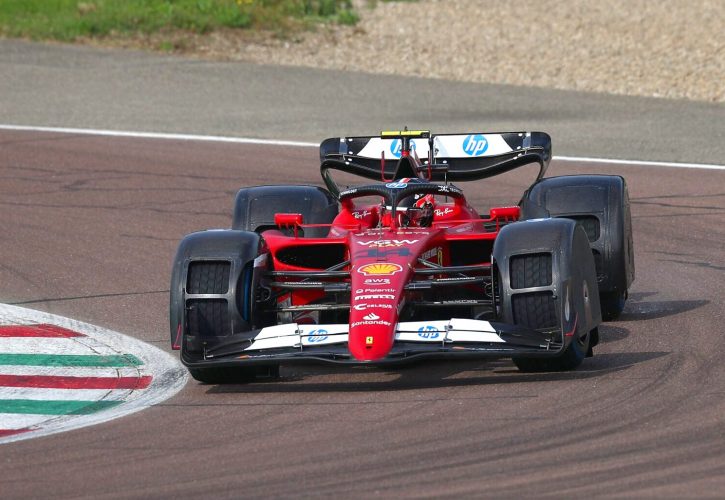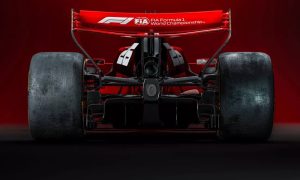
Ferrari trialed in Fiorano on Thursday, under the supervision of the FIA, a new design of spray-guard in a bid to improve a following car’s visibility in wet track conditions.
Formula 1 drivers have long lamented the struggles of racing in wet conditions, but motorsport‘s governing body has only recently begun to address the issue.
A test organized last year at Silverstone with Mercedes and McLaren failed to produce any significant improvement.
But the revised design tested on Thursday in Fiorano, based on pictures that emerged on social media, appears to offer a more comprehensive coverage of the car’s wheels.
The new system, trialed on a 2023 Ferrari SF-75 driven by Charles Leclerc's brother Arthur, features fully covered front and rear guards with two openings in the front section.
Following Leclerc, Scuderia reserve driver Oliver Bearman was at the wheel of a current-spec Ferrari SF-24 to assess the impact on visibility of the new spray-guard system.
The FIA, spearheading the initiative to improve wet-weather racing conditions, conducted the evaluation independently. Bearman’s laps onboard Ferrari’s SF-24 will not count towards the Italian outfit’s limited filming-day mileage.
Ferrari in pista a Fiorano: ecco i nuovi paraschizzi FIA
️ @SmilexTech @_Paolo_27 https://t.co/qLL6N5FLBk
— FORMU1A.UNO (@formu1a__uno) May 9, 2024
Last year, Nicolas Tombazis, the FIA's single-seater director, emphasized the significant technical hurdles involved in developing an effective spray guard system.
"Having started this project towards the end of last year, and done quite a lot of CFD simulations, we did understand quite soon that it was not quite as simple as just put something on, off you go, and you're done," he said, quoted by Motorsport.com.
"We didn't want to lose too much performance of the cars and mess up the aerodynamics too much. Although some of it is inevitable.
"And the actual aerodynamic load on these big mudguards or whatever you call them, if you have a complete cover, that would have quite high dynamic load. And therefore their support on the uprights would have to be fairly robust to not fly off at 300km/h."
Keep up to date with all the F1 news via Facebook and Twitter







